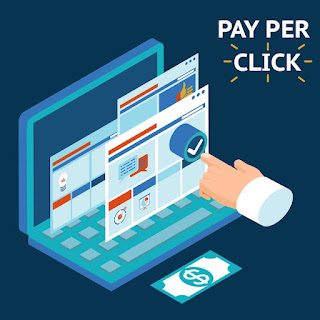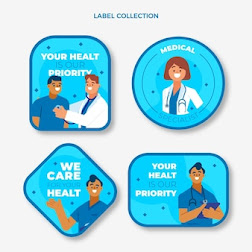ENJOY E-MARKETING
**1. Introduction to E-Marketing:**
E-Marketing, or Electronic Marketing, involves leveraging digital channels to promote products or services. It's crucial for businesses aiming to reach a broader audience in the digital age.
Certainly! Crafting a compelling introduction to E-Marketing is crucial to captivate your audience. Here's a refined introduction:
In the dynamic landscape of modern commerce, where digital footprints define consumer interactions, E-Marketing emerges as the transformative force propelling businesses into the forefront of the global marketplace. As we traverse the realms of this electronic frontier, the convergence of technology, innovation, and consumer behavior unfolds a narrative of unprecedented opportunities.
E-Marketing, short for Electronic Marketing, transcends traditional boundaries, becoming the catalyst for businesses to not just connect but engage meaningfully with their audiences. It's a symphony of strategies interwoven with the fabric of the internet, orchestrating a harmonious blend of precision targeting, personalized experiences, and real-time analytics.
At its essence, E-Marketing is not merely a set of tools but a strategic paradigm shift. It empowers businesses to navigate the complexities of the digital age, reaching global audiences with the finesse of a tailored message. As we embark on this journey through the avenues of social media, search engines, and beyond, the promise of a borderless, 24/7 marketplace unfolds.
In this introduction, the stage is set for a profound exploration of E-Marketing—an exploration that delves into the intricacies of building brand narratives, fostering customer relationships, and navigating the ever-evolving currents of online commerce. It's an invitation to decode the digital language, where every click, every engagement, and every strategy is a stroke on the canvas of a new era in business. Welcome to the realm where E-Marketing reigns supreme, shaping the destiny of enterprises in the age of the Internet.
**2. Understanding Your Audience:**
Identify your target audience, their preferences, and online behavior. This insight helps tailor your marketing strategies for maximum impact.
**3. Building a Strong Online Presence:**
Create a professional website that reflects your brand identity. Ensure it is user-friendly, responsive, and optimized for search engines.
**4. Content is King:**
Develop compelling and relevant content. Regularly update your website with blog posts, articles, and multimedia content to engage your audience.
**5. Social Media Strategy:**
Utilize social media platforms to connect with your audience. Choose platforms relevant to your business and maintain an active presence.
**6. Email Marketing:**
Build an email list and implement targeted email campaigns. Personalize messages and provide value to your subscribers.
**7. Search Engine Optimization (SEO):**
Optimize your website for search engines to improve visibility. Research keywords relevant to your business and incorporate them strategically.
**8. Pay-Per-Click (PPC) Advertising:**
Consider paid advertising on platforms like Google Ads. Set a budget, create compelling ads, and target specific keywords.
**9. Influencer Marketing:**
Collaborate with influencers in your industry. Their endorsement can significantly impact your brand's visibility and credibility.
**10. Analytics and Metrics:**
Use analytics tools to track website traffic, user behavior, and campaign performance. Analyze data to refine your strategies.
**11. Mobile Optimization:**
Ensure your website is mobile-friendly. With a growing number of users accessing content via mobile devices, optimization is crucial.
**12. E-Commerce Integration:**
If applicable, implement e-commerce functionality on your website. Make the buying process seamless for customers.
**13. Customer Relationship Management (CRM):**
Invest in CRM tools to manage customer interactions effectively. Personalize communication and build lasting relationships.
**14. Cybersecurity Measures:**
Prioritize cybersecurity to protect customer data and build trust. Implement secure payment gateways for online transactions.
**15. Regulatory Compliance:**
Be aware of and adhere to relevant data protection and consumer privacy regulations to avoid legal issues.
**16. Social Proof:**
Encourage customer reviews and testimonials. Positive feedback builds trust and influences potential customers.
**17. A/B Testing:**
Experiment with different marketing strategies using A/B testing. Determine what resonates best with your audience.
**18. Landing Pages Optimization:**
Optimize landing pages for specific campaigns. Clear calls-to-action and minimal distractions improve conversion rates.
**19. Chatbots and Automation:**
Implement chatbots for customer support and automate repetitive tasks. This enhances efficiency and improves user experience.
**20. Customer Loyalty Programs:**
Reward customer loyalty with exclusive offers or discounts. Retaining existing customers is often more cost-effective than acquiring new ones.
**21. Cross-Channel Consistency:**
Maintain a consistent brand image across all channels. Coherent messaging builds brand recognition.
**22. Local SEO:**
If your business serves a local audience, focus on local SEO strategies to enhance visibility in local search results.
**23. Video Marketing:**
Leverage the power of video content. Create engaging videos that showcase your products or services.
**24. Crisis Management:**
Have a crisis management plan in place for handling negative publicity or online crises promptly and effectively.
**25. User Experience (UX):**
Prioritize a positive user experience on your website. Easy navigation and a seamless interface enhance customer satisfaction.
**26. Community Engagement:**
Engage with online communities related to your industry. Participate in discussions and establish your brand as an authority.
**27. Voice Search Optimization:**
With the rise of voice-activated devices, optimize your content for voice search queries.
**28. Geotargeting:**
Use geotargeting to customize content based on the user's location. This enhances relevance.
**29. Emerging Technologies:**
Stay abreast of emerging technologies. Consider how innovations like augmented reality or virtual reality can enhance your marketing efforts.
**30. Sustainable Practices:**
Highlight any sustainable practices your business follows. Eco-conscious consumers appreciate environmentally friendly initiatives.
**31. Native Advertising:**
Incorporate native advertising seamlessly into online platforms. It provides a non-disruptive way to reach your audience.
**32. Employee Advocacy:**
Encourage employees to advocate for the brand on social media. Their genuine endorsements can boost credibility.
**33. Market Research:**
Continuously conduct market research to stay informed about industry trends and evolving customer needs.
**34. Social Responsibility:**
Showcase your commitment to social responsibility. Consumers increasingly support brands with ethical practices.
**35. Gamification:**
Introduce gamification elements to engage users. This can be through contests, quizzes, or interactive experiences.
**36. Virtual Events:**
Host virtual events or webinars to connect with your audience. They provide opportunities for direct interaction.
**37. Influential Partnerships:**
Forge partnerships with other businesses or influencers. Collaborative efforts can expand your reach.
**38. Subscription Models:**
Consider offering subscription-based services. Predictable revenue streams enhance financial stability.
**39. Mobile Apps:**
If feasible, develop a mobile app for your business. Apps can enhance user engagement and loyalty.
**40. Personalization:**
Tailor your marketing messages based on user behavior and preferences. Personalized content resonates more with audiences.
**41. Trend Monitoring:**
Monitor industry trends and adjust your strategies accordingly. Staying ahead ensures continued relevance.
**42. Customer Surveys:**
Seek feedback through customer surveys. Understand their needs and areas for improvement.
**43. Accessibility Compliance:**
Ensure your website complies with accessibility standards. This includes catering to users with disabilities.
**44. Omnichannel Strategy:**
Implement an omnichannel marketing strategy. Seamlessly integrate online and offline channels for a cohesive customer experience.
**45. Emotional Branding:**
Connect with your audience on an emotional level. Emotionally resonant brands often create lasting impressions.
**46. Niche Marketing:**
Identify and target specific niches within your industry. Tailoring your approach can lead to higher conversion rates.
**47. Agile Marketing:**
Adopt an agile marketing approach. Be ready to adjust strategies based on real-time data and market changes.
**48. Data Security Measures:**
Enhance data security measures to protect both customer and business information.
**49. Employee Training:**
Provide ongoing training for employees to stay updated on the latest marketing trends and tools.
**50. Continuous Improvement:**
Embrace a culture of continuous improvement. Regularly assess and refine your strategies for optimal results.
In the ever-evolving realm of E-Marketing, navigating the digital landscape requires a harmonious blend of creativity, adaptability, and strategic finesse. As we conclude this exploration, it becomes evident that success in the online business sphere is not merely about adopting the latest trends but embracing a holistic approach that encompasses user-centricity, technological innovation, and a commitment to continuous improvement.
In this digital odyssey, understanding your audience, crafting compelling content, and harnessing the power of diverse channels from social media to search engines are the guiding stars. Yet, it's not just about the tools; it's about the connections forged, the experiences curated, and the value delivered to customers.
From the inception of your online presence to the day-to-day operations, the journey involves overcoming challenges, seizing opportunities, and above all, staying attuned to the dynamic pulse of the digital landscape. It's a tapestry woven with threads of engagement, trust, and innovation, creating an immersive experience for your audience.
As you embark or further traverse the path of E-Marketing, let curiosity be your compass, data your navigator, and customer satisfaction your true north. The digital realm is a canvas awaiting your creative strokes, a symphony awaiting your unique melody. So, let each click, each interaction, and each strategy be a brushstroke, a note, and a step towards crafting a digital masterpiece.
In the grand finale, remember that the journey doesn't end here; it transforms. Embrace change, celebrate milestones, learn from setbacks, and let the rhythm of digital evolution propel your online business towards new horizons. May your endeavors in E-Marketing be as captivating as the digital world itself—a dynamic tapestry woven with innovation, resilience, and the unwavering pursuit of excellence.




.png)
Comments
Post a Comment
Greetings.i will be replying soon